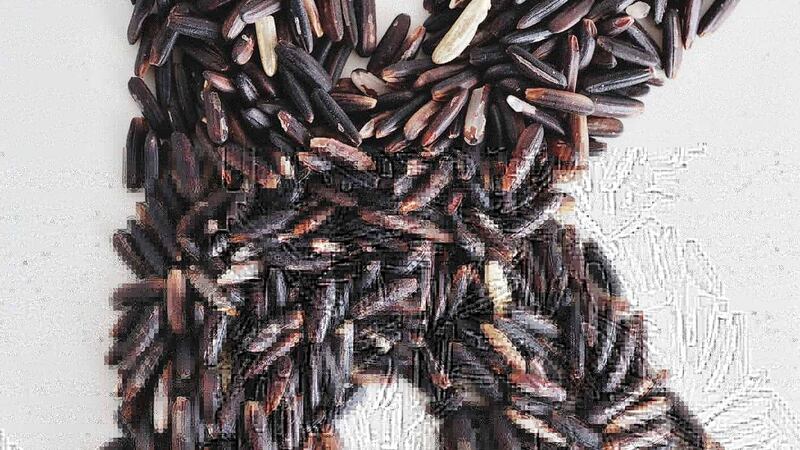As vitamin K increasingly becomes the focus of research on bone protection, low levels of intake are emerging as dietary risk factors for osteoporosis, writes Roisin Armstrong
REGULARLY there are discussions about vitamins A, B, C, D, and E and not a lot of chat about vitamin K. Vitamin K is named after the German word for blood clotting (koagulation), which kind of gives a big clue to its job in the body. Increasingly, though, science is finding that it does a little more than it says on the tin: it makes a variety of unique contributions to our health, including heart and bone health. There are three basic types of vitamin K, referred to as K1, K2, and K3.
The K1 form of the vitamin is found in plants. Many of the best sources are green vegetables; this makes good sense since K1 is required for green plants to conduct the process of photosynthesis.
The K2 form of vitamin K is made from K1 and K3 by bacteria and other microorganisms. It can also be made in the human body through a similar conversion process.
In plant foods, you won't find much preformed K2, unless these have been fermented or otherwise transformed by bacteria or other microorganisms.
One such example is Bacillus natto, this bacterium can convert K1 into K2 and it is often used in the production of fermented soy products, including tempeh and miso. These can contain significant amounts of K2 and, as plant foods, they also naturally contain K1. Some vitamin K3, as menadione, is found preformed in food but in very small amounts. As yet, research is sketchy on its health role. Vitamin K is a fascinating nutrient with respect to bone health and knowledge about its role is fairly well-established.
Individuals who are vitamin K deficient have repeatedly been shown to have a greater risk of fracture.
In addition, for women who have passed through menopause and have started to experience unwanted bone loss, vitamin K has clearly been shown to help prevent future fractures.
The bone-related benefits of vitamin K appear to depend on at least two basic mechanisms; the first of these involves a type of bone cell called osteoclasts.
Osteoclasts are bone cells in charge of bone demineralisation - they help take minerals out of the bone and make them available for other body functions.
While the activity of these cells is important for proper health, too many osteoclasts would mean too much demineralisation of bone so Vitamin K helps our body by blocking the formation of too many osteoclasts.
A second mechanism involves the role of vitamin K in a process called carboxylation, which is also important to the stickiness of clotting factors required for proper blood clotting.
For our bones to be optimally healthy, one of the proteins found in bone - a protein called osteocalcin - needs to be chemically altered through the process of carboxylation. Osteoctalcin is a protein especially linked to our bone mineral density (BMD) and, for this reason, it often measured in our blood when doctors are seeking to determine the health of our bones.
When too few of the osteocalcin proteins in our bone are carboxylated, our bones have increased risk for fracture. This unwanted risk appears to be particularly important with respect to hip fracture.
Vitamin K can help restore these bone proteins to their proper place in our bone structure and strengthen the composition of the bone.
Some studies show the K2 form to be especially helpful in postmenopausal bone
protection; another reason why fermented soy foods are rated, as well as for their phyto-oestrogen potential.
Increasingly this vitamin is becoming more and more focal in research on bone protection and low levels of vitamin K intake are emerging as dietary risk factors for osteoporosis.
Researchers have shown that increasing dietary vitamin K intake by 100 mcg per day - roughly doubling the average adult intake for a time period of one full year - can lead to a significant increase in bone density in post-menopausal women.
Low levels of vitamin K have also been associated with increased risk of arthritis. Low activity of vitamin K-dependent proteins inside the joints has been suggested as a likely mechanism for this increased risk.
So how do you increase your vitamin K? The best sources, in order, are: kale, spinach, Swiss chard, parsley, broccoli, Brussels sprouts, Romaine lettuce, asparagus, basil, cabbage, bok choy, celery, leeks, kiwi fruit, green beans, cauliflower, cucumber, tomatoes, oregano, black pepper, green peas, blueberries, squash, peppers, plums, leeks, aubergine and fermented soya bean products. This list is by no means exhaustive.
* Roisin Armstrong is a kinesiologst and acupuncturist with clinics in Portglenone (028 2582 1333) and Holywood (0777 0862 637). r.armstrong@irishnews.com


